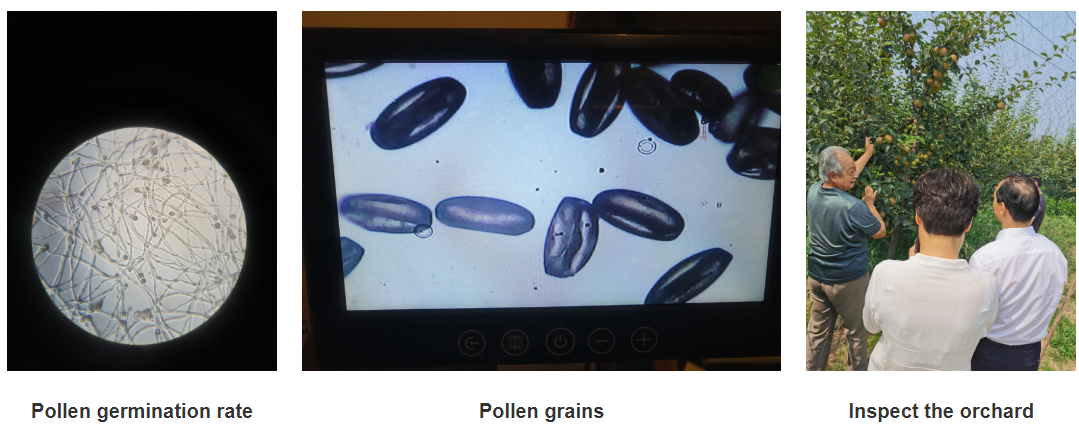Oct . 03, 2024 14:10 Back to list
protocol for cherry pollen germination quotes
Protocol for Cherry Pollen Germination A Comprehensive Overview
Pollen germination is a critical step in the reproductive cycle of flowering plants, including cherry trees. Understanding the protocol for cherry pollen germination is essential for horticulturists, plant biologists, and researchers focused on plant breeding and genetics. This process not only aids in the study of cherry tree propagation but also contributes to the enhancement of fruit quality and yield.
Materials and Equipment
To begin, the necessary materials for conducting cherry pollen germination experiments include cherry pollen, a suitable germination medium, a microscope, petri dishes, and a controlled environment for incubation. The germination medium often consists of a sugar solution, such as 10% sucrose combined with a small concentration of boric acid, which aids in growth. The choice of medium is crucial as it significantly influences germination success.
Collection of Pollen
The collection of cherry pollen should be timed accurately to ensure that pollen grains are viable. This is typically done during the flowering period when the anthers release pollen. Using a small brush or by gently shaking the blossoms, pollen can be collected and transferred to a clean container. It’s essential to handle the pollen carefully to avoid contamination, which could compromise the results.
Preparation of Germination Medium
Once the pollen is collected, the germination medium should be prepared. The sugar solution can be made by dissolving sucrose in distilled water and adding a small amount of boric acid as a nutrient supplement. This mixture is then poured into petri dishes and allowed to solidify slightly—this provides a suitable surface for pollen germination while maintaining necessary moisture.
protocol for cherry pollen germination quotes

Germination Process
The collected cherry pollen is then evenly distributed across the surface of the germination medium in the petri dishes. It's important to space the pollen grains adequately to prevent overlapping, which can hinder germination. Following this, the dishes should be placed in a controlled environment with optimal temperature and humidity levels. Generally, a temperature range of 20°C to 25°C (68°F to 77°F) is ideal, along with high humidity levels to facilitate pollen tube growth.
Incubation and Observation
The dishes are typically incubated for 12 to 48 hours, during which the process of pollen germination occurs. Periodic observation under a microscope allows researchers to assess the percentage of pollen grains that successfully germinate. This assessment is crucial for evaluating the viability of the pollen and is usually recorded as a percentage of total grains.
Data Analysis
Once the observations are complete, data is analyzed to determine the effectiveness of the germination protocol. Researchers may compare results across different cherry species or specific treatments applied during the germination process. This analysis can provide insights into the genetics and physiology of cherry trees, leading to improved horticultural practices.
Conclusion
In conclusion, the protocol for cherry pollen germination is a systematic approach that plays a vital role in plant reproduction studies. From pollen collection to germination observation and data analysis, each step contributes to a deeper understanding of cherry tree biology. As research in this field progresses, such protocols will continue to aid in the development of better cherry cultivars, ultimately benefiting both the industry and consumers. By mastering these techniques, researchers can enhance the productivity and quality of cherry fruits, sustaining the agricultural landscape for future generations.
-
Plant Pollen Analysis: Fast & Accurate with GPT-4 Turbo
NewsAug.02,2025
-
KiwiPollen with GPT-4 Turbo: AI Health Supplement Boost
NewsAug.01,2025
-
Pollen Peach Tree AI Management with GPT-4-Turbo
NewsJul.31,2025
-
Eco Fruit Paper Bags for Peak Freshness | Durability Focused
NewsJul.31,2025
-
Pollen Peach Tree for Pure Pollination and High-Quality Peach Pollen
NewsJul.30,2025
-
Premium Cherry Pollen for Pure Pollination & Different Types
NewsJul.30,2025